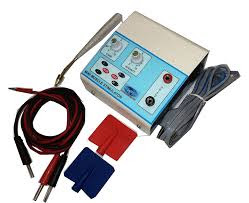Muscle Stimulation Devices Are Also Known As Neuromuscular Electrical Stimulation, Which Is Used For Measuring Muscle Contraction by Utilizing Electric Impulses
Muscle stimulation
devices are used all over the world, including regions such as Germany, Japan,
and Mexico. Muscle stimulation devices, also referred to as neuromuscular
electrical hyperpolarization or mechanotransduction, is the excitation of
muscle action with electrical impulses. This technique was initially developed
for treating muscle spasms in patients with diseases such as Multiple Sclerosis
(MS), Crohn's Disease (CD), and Ulcerative Colitis (UC). It has now been shown
to be beneficial in a wide range of musculoskeletal problems, including low
back pain and Irritable Bowel Syndrome (IBS).
The principle behind
muscle stimulation devices is not clear. However, it appears to use some form
of technology to cause the muscles to contract. It has also been demonstrated
that the electrical current causes the release of natural chemicals called
neurotransmitters that are responsible for local blood circulation throughout
the body. This local circulation increases the speed and intensity of the
muscles' contractions, which leads to a rapid reduction in the level of pain
felt during exercise.
There are four types of
muscle stimulation device techniques currently used. The most commonly used is
transcutaneous electrical nerve stimulation (TENS). With this form of
stimulation, electrodes are placed on the skin directly below the muscles where
electrical activity is observed. The electrodes then send signals to the brain,
which interpreted it as pain or itchiness. In regions such as Germany, the
prevalence of sports clubs has increased the requirements for muscle
stimulation devices. For instance, according to German Football Association,
there are currently 26,000 clubs and 178,000 teams in German football sports.
Another form of muscle
stimulation device uses transcutaneous electrical nerve stimulation (TENS).
With this technique, plastic electrodes are placed on the skin. When the skin
feels pain, electrical impulses are sent to the electrode causing it to
generate pain. This method has shown promising results for treating physical
therapy treatment for acute physical therapy patients with neuromuscular
problems. One study showed significant improvements in patient radicular pain
and muscle atrophy in patients receiving EMS.
Dry Needling is another
technique used for treating chronic symptoms of neuromuscular disease. With dry
needling, tiny needles are placed just above the trigger points on the body.
When the trigger points become activated, electrical muscle stimulation causes
contractions in the underlying muscles. These contractions are typically
painless and take about two to three minutes to complete.


Comments
Post a Comment